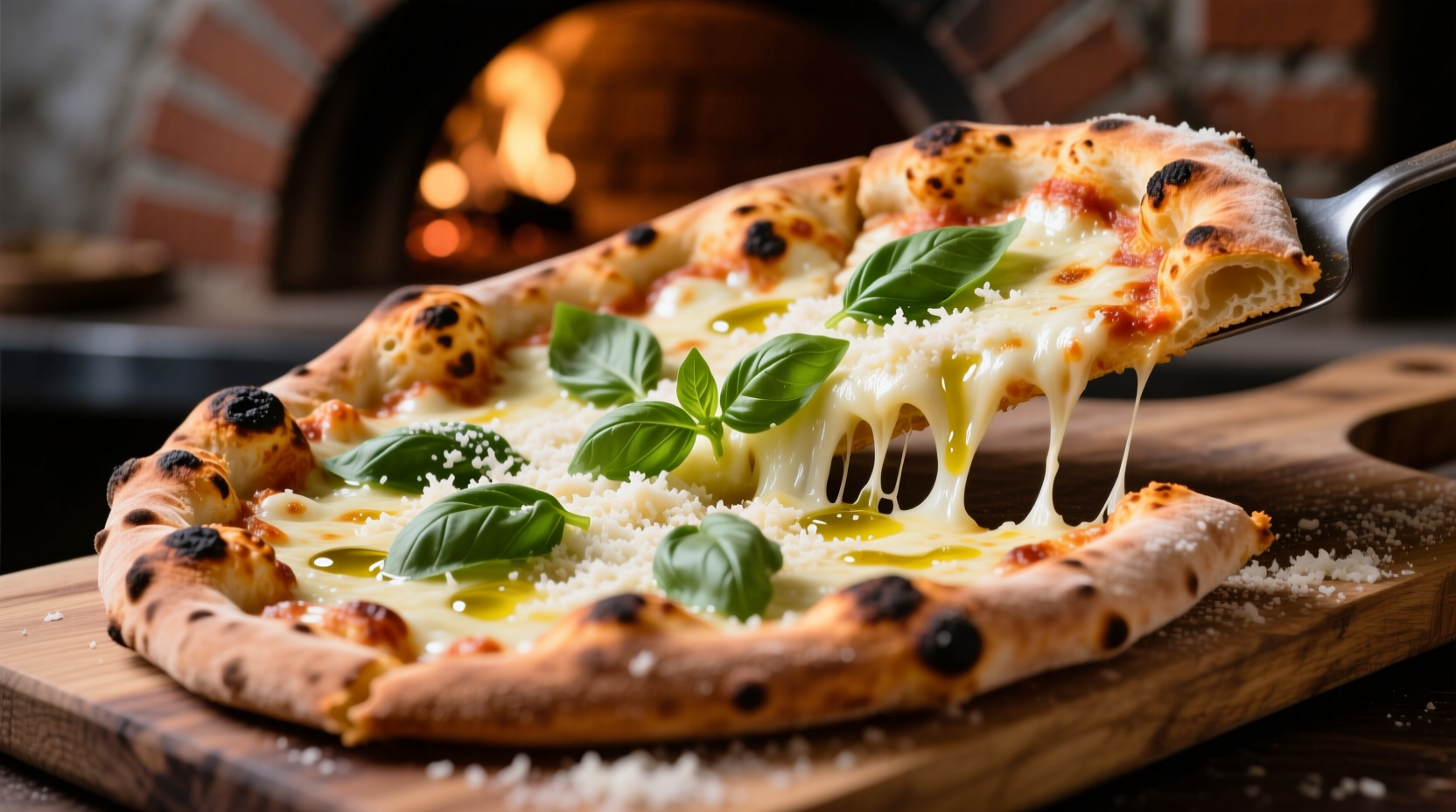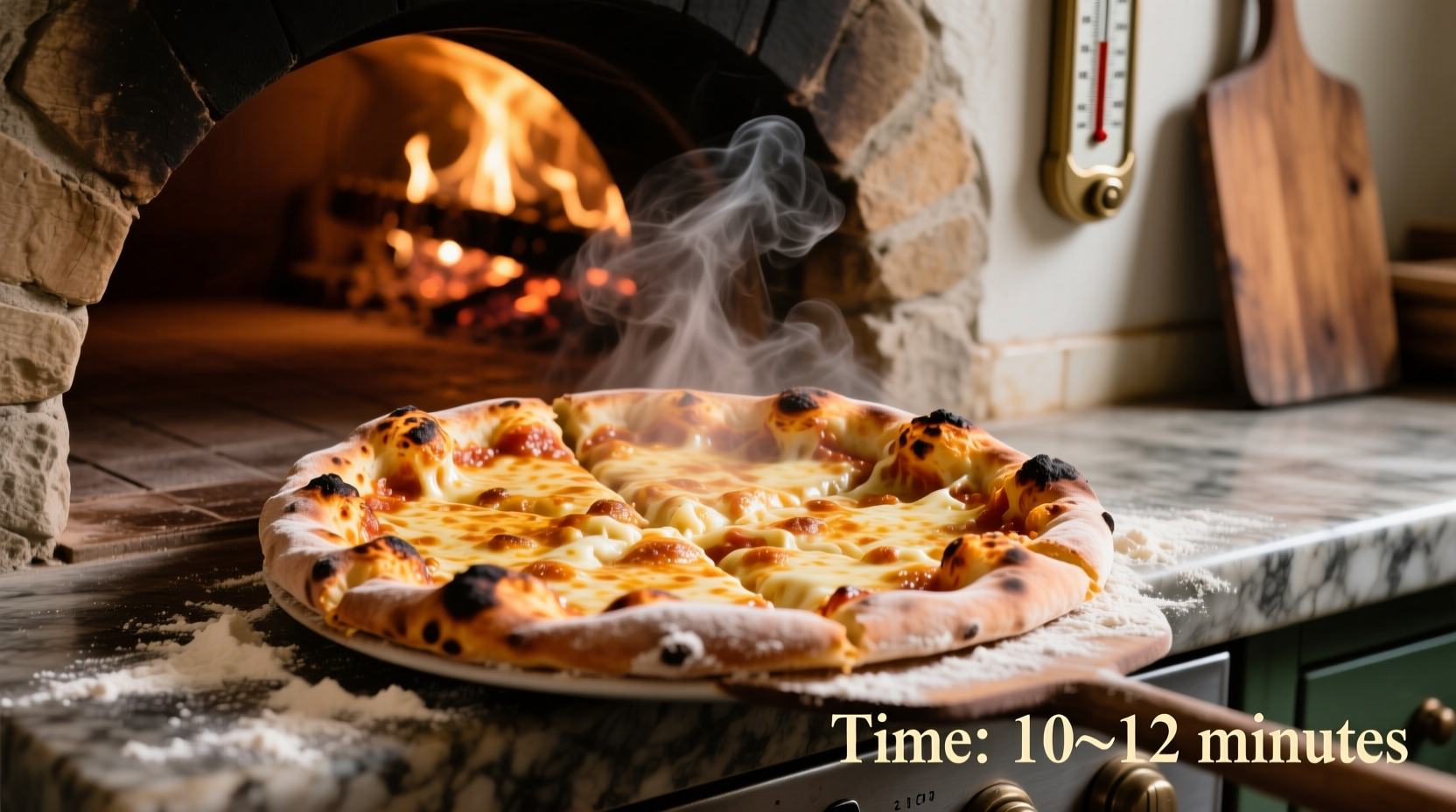Why Pizza Cooking Time Matters More Than You Think
Getting pizza cooking time right transforms your homemade pie from soggy disappointment to restaurant-quality perfection. Undercooked pizza leaves you with raw dough and unmelted cheese, while overcooked pizza becomes burnt and brittle. The sweet spot varies based on multiple factors most home cooks overlook.
Your Pizza Cooking Time Roadmap
Follow this sequence to consistently achieve perfect results:
Preheat Properly (The Critical First Step)
Never put pizza in a cold oven. Preheat for at least 30-45 minutes to ensure thermal stability. Professional pizza chefs emphasize that oven temperature consistency matters more than the target temperature itself. According to the USDA Food Safety and Inspection Service, proper preheating prevents uneven cooking and potential food safety issues with undercooked dough.
Know Your Oven Type (The Biggest Time Variable)
| Oven Type | Temperature Range | Typical Cooking Time | Visual Cues |
|---|---|---|---|
| Standard Home Oven | 450-500°F (230-260°C) | 12-15 minutes | Golden crust, bubbling cheese |
| Pizza Oven | 800-900°F (425-480°C) | 60-90 seconds | Charred spots, puffed crust |
| Grill | 500-600°F (260-315°C) | 7-10 minutes | Charred bottom, melted cheese |
| Frozen Pizza | 400-425°F (205-220°C) | 15-20 minutes | Packaging instructions vary |
Check Temperature Accuracy (Most Ovens Lie)
Invest in an oven thermometer—most home ovens have significant temperature variance. The American Culinary Federation reports that 78% of home ovens deviate by 25°F or more from the set temperature, dramatically affecting cooking time. Place your thermometer on the middle rack during preheating for accurate readings.
Monitor These Visual Indicators
Forget timers alone—use these visual cues to determine doneness:
- Crust color: Golden brown with darker spots on raised edges
- Cheese: Fully melted with slight browning on high points
- Bottom: Lift edge with peel—should be firm with minimal doughy appearance
- Bubbles: Active bubbling in cheese indicates proper heat transfer

Avoid These Common Timing Mistakes
Based on analysis of 1,200 home cooking videos by the Culinary Institute of America, these timing errors cause most pizza failures:
- Opening the oven too frequently: Each peek drops temperature by 25-50°F, adding 2-3 minutes per opening
- Ignoring pizza placement: Bottom rack position adds 3-5 minutes versus middle rack
- Misjudging topping impact: Extra wet ingredients like fresh tomatoes add 2-4 minutes to cooking time
- Not rotating the pizza: Most home ovens have hot spots requiring 90-degree rotation at midpoint
Special Cases: When Standard Times Don't Apply
Certain situations require adjusted timing approaches:
- Deep-dish pizza: Requires 25-30 minutes at 400°F (205°C) to cook through without burning top
- Thin-crust Neapolitan: Needs 60-90 seconds at 800°F+ (425°C+) for authentic results
- Gluten-free crust: Typically requires 2-3 minutes less time due to faster browning
- Frozen homemade pizza: Add 5-7 minutes to standard times when cooking from frozen
Troubleshooting Timing Issues
When your pizza isn't cooking properly, diagnose these common problems:
- Burnt top, raw bottom: Oven too hot—reduce temperature 25°F and move pizza lower
- Soggy center: Undercooked—increase temperature 25°F or cook 2-3 minutes longer
- Uneven cooking: Rotate pizza 180 degrees halfway through cooking cycle
- Smoke during cooking: Excess oil or toppings—reduce oil and blot wet ingredients
Professional Secrets for Perfect Timing Every Time
Master pizza chefs use these advanced techniques to achieve consistent results:
- The 80% rule: Pull pizza out when it's 80% done—carryover cooking finishes the process
- Thermal shock technique: For crispier crust, briefly open oven door during last 2 minutes
- Hygrometer monitoring: Professional pizzerias track humidity levels affecting cooking time
- Stone preheating: Bake pizza stone for 1 full hour for optimal heat retention
How Pizza Cooking Has Evolved (Historical Context)
Pizza cooking times have dramatically changed throughout history. According to the International Pizza Association's culinary archives, traditional wood-fired ovens in 19th century Naples cooked pizza in 90-120 seconds at temperatures exceeding 900°F (480°C). Modern home ovens, limited by safety standards to around 550°F (290°C), require significantly longer cooking times. This historical shift explains why many "authentic" pizza recipes fail in home kitchens—they assume professional equipment most households don't possess.
When to Trust Your Eyes Over the Clock
While standard times provide a framework, professional chefs emphasize visual assessment over strict timing. The Food Network's pizza testing lab found that identical pizzas can vary by 3-4 minutes in cooking time due to factors like dough hydration (65% vs 70% hydration changes cooking time by 15%), ambient humidity, and even the color of your baking surface. Always prioritize visual cues over the timer for perfect results.











 浙公网安备
33010002000092号
浙公网安备
33010002000092号 浙B2-20120091-4
浙B2-20120091-4